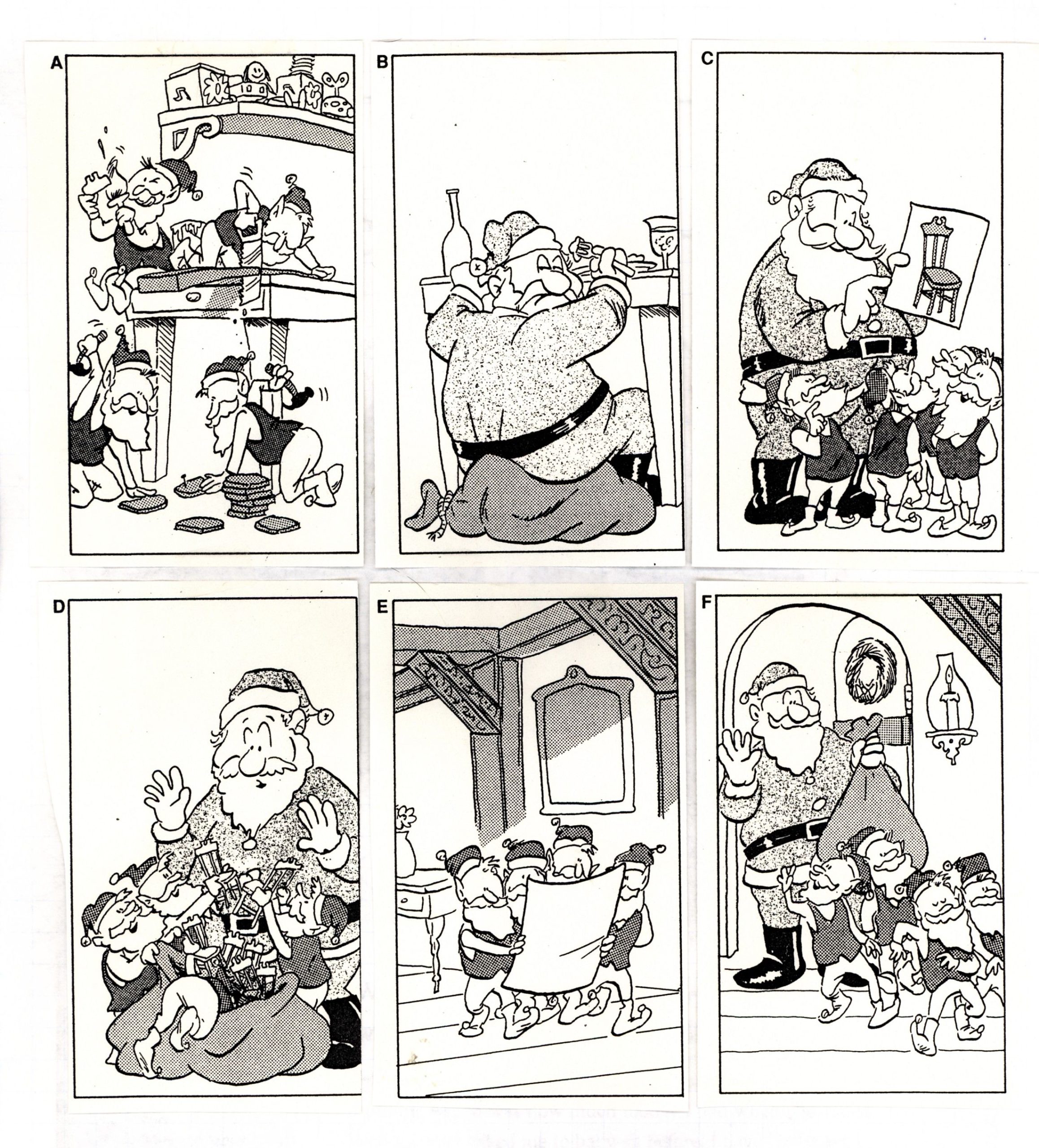As long as the holidays are on their way, we have decided to share some cool activities that you can use in your classes to engage the learners in the holiday spirit, boost some writing techniques and create an enjoyable learning environment at the same time.
Needless to say, that each of these activities should be based on some background knowledge, meaning that the structure of story writing, emails or essay writing have been dealt with during the previous sessions. Why so? — because close to the holiday season it will be more fun and productive to conduct a revision session of the covered material rather than dwell on to a new skill to be covered.
I have tried all the below mentioned activities and they work very nicely with different age groups.
So, here we go.
Continue the title
This activity works best with higher language levels, as the students will need to produce some written texts.
Before class, prepare a catchy title. The one I am going to use this year is: “It was 2 minutes before midnight, when…”.
Remind the students / elicit the structure of story writing. You can choose the simplest one: Exposition, Rising action, Culmination / Climax, Falling action / Resolution.
Set the students in pairs and ask them to brainstorm what they will be writing in the story. Make sure they follow the structure and assign a word limit to be covered. Depending on the level, the word count grows. You can start something from 100 words.
Once the students are done brainstorming, ask them to start writing by color-coding the structure with highlighters (Exposition — green, Rising action — orange, etc.) Time the students to complete the composition for about 15-20 minutes.
When the stories are ready, ask the students to post them on the walls, walk around the classroom with their partners and read the stories of their classmates. While reading each other’s stories students will need to be attentive to see whether the structure of the story was kept, underline (NOT correct) some grammar/vocabulary/spelling mistakes if they find them and tick the story if they like it. The story that gets the most ticks, wins and will be read out loud.
As for error correction, make sure you read the stories as well, pay attention to the mistakes the students have underlined, take some notes and by the end of the class go back to the mistakes and clarify them for the rest of the class. You can either ask students to help you fix the mistakes in pairs and then share open class, or you can do it as an open class activity altogether.
Different Ending
This one works well with students who have B1 and higher competency in the language, as it includes not only composing a story using their active vocabulary but also reading and understanding a text.
I am normally using some of these.
Before the class choose a story per pair of students (if the class is strong) or a story for the whole class. I like the second option more as it is more engaging and creates competition to produce the best story. Choose a story that has a catchy exposition as the students will need to finish the story themselves.
In class, pre-teach some key language from the paragraph that you are going to distribute to the students.
Set the students in pairs, let them read the beginning of the story, brainstorm together on how they are going to continue the story. As soon as the brainstorming stage is over time the students for 10-15 minutes to continue and finish the story.
When the stories are ready, proceed like described in the previous activity (post the stories on the walls, walk around to read, etc.). Students normally come up with very creative and different stories and it is fun to see how bright their imagination is.
A very nice alternative to this activity is to distribute different parts of the story to different pairs. It means, one pair will have the exposition of the story, the other one the rising action and so on. Depending on the part of the story they received, students will need to complete the story making sure that the structure of the story is kept.
Created vs. Original
This activity works well with A2+ and higher levels of learners. Here students will need to compose a story as close to the original as possible.
Before the class, choose the title of a real story. You can choose something from here. Tell the students that it is the title of a real story, and they will need to guess what the story is about. Set the students in pairs and ask them to brainstorm what the story can be about and write it with their partners. Needless to say that the structure should be followed as always.
Once the students are done, ask them to read each other’s stories. As an alternative to the above-mentioned pair reading activities, you can simply ask them to pass the stories around.
Distribute the original story to the students and let them read to find out who had the closest guess. The story closest to the original wins and can be rewarded by anything of your choice (a candy, a star, a round of applause, etc.).
Brainstorm words and Writing a story
Another fun way of story writing is when students have no idea that they will be asked to do it. This is what I mean.
At the beginning of the class ask students to tell you some words, phrases, and sentences that they associate with Christmas and New year (bells, ringing, Santa is in the chimney, reindeer, opening presents, etc.). Board whatever they say and encourage the students to pitch in as much as possible.
If there are no more ideas, set the students in pairs and ask them to compose a Christmas story using the boarded words/phrases, sentences and choose a title for the story as well. This is a nice and fun activity, as firstly the students don’t know what is coming and secondly, they work with words and phrases that they already know.
You will be surprised at how many variations of the story you will get.
Picture cards
It is common to think that picture stories are for kids, but they work very well with adult learners as well. Surely, the background, interest and sometimes professions of the people should be taken into account.
Choose some interesting story cards and ask the students to create a story using them. First, they will need to brainstorm what the story is going to be about and then proceed with the writing as usual.

You can get more creative and choose random pictures from the Internet to create a more unpredictable story.

These are just sample pictures. Choose as differently as your imagination will let you. 🙂
Letter to Santa
We have all written letters to Santa hoping that they will come true. This activity works perfectly with young learners, however, it can also work for adults if properly adapted.
Provided you have covered the topic of “Formal/Informal” emails, you can use that knowledge to make this activity work for adult learners as well.
Before the class, prepare some topics that the students will need to write on (Business proposal to Santa, Sanctions against Santa, “To-do” list for Santa, etc.). Also, write the names of your students on pieces of paper and put them in a bowl.
Elicit the structure of business email writing (e.g. Subject line, Salutation, Body email, Signing off), some language that can be used when writing a business emails (I am writing to inquire about, Hope my message reaches you well, Could you please, Do not hesitate to contact me, etc.) and some DON’Ts in business emailing (no short forms — I’m, You’re, no informal language — hey, what’s up, etc.)
Ask the students to write an email to Santa by randomly picking a topic. When the topics are chosen, pull out 2 names from the bowl. The students whose names were mentioned will be writing to each other. So, if the first pair you pulled out were John and Mary, John will be writing to Mary as the Santa and Mary will be writing to John as the Santa. Hence, everyone will have a Santa to write to and be a Santa as well.
When all the pairs are allocated, the students can start the writing. As soon as the emails are ready, ask the students to send it to their Santa. The Santas will need to read the emails, answer them using the same rules applied to business email writing and send it back.
Review of a movie
This activity works very nicely with B1 and higher language competency.
There are a lot of favourite movies based on Christmas and New year.
Before the class, choose several movie titles, preferably those that are not very popular. (Bad Santa, Jingle all the way, Fred Claus). Alternatively, you can create the titles of the movies yourself to completely avoid people having seen the movies. Also, add a short description of what the movie is about.
In class, post the movie names on the bard / on PPT, ask the students to choose one they would like to work on and write a review of about 150 words including the following information;
- Why did you like/dislike the movie?
- Who was your favourite/least favourite actor/actress and why?
- What would you change about the movie?
- Would you recommend the movie to others?
Once the students are done with the reviews, ask them to pass them around and read each other’s reviews choosing the one they would like to watch.
Santa’s diary
Last but not least is the“Santa’s diary”. Before class, prepare some A4 paper, preferable colored and write 2019 on the top (the year depends on which year you are doing the activity).
In class, ask the students to imagine they are Santas and that they are keeping a diary. Ask them to remember the most important events in their lives throughout the passing year as Santas and write some of them in their diaries. To help the students, you can brainstorm some ideas on what is happening in Santa’s life according to the students. Encourage them to get creative and go beyond the regular present preparation idea. It can be something like going on holiday, meeting new friends, etc.
Students can get very creative and come up with really nice and hilarious stories.
Once the writing stage is complete, circulate the stories around, ask the students to read each other’s diaries and choose the best one they liked.
The winning diary can surely be rewarded based on your creativity. 🙂
You can read more about Teaching writing skills here.
So, these are some activities that I have been using. Let us know which one you liked and tried and maybe share some of yours.






 Вероника Аветисян
Вероника Аветисян 
 Маргарита Аветисян
Маргарита Аветисян 


